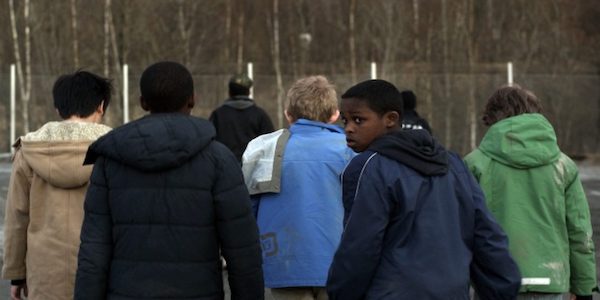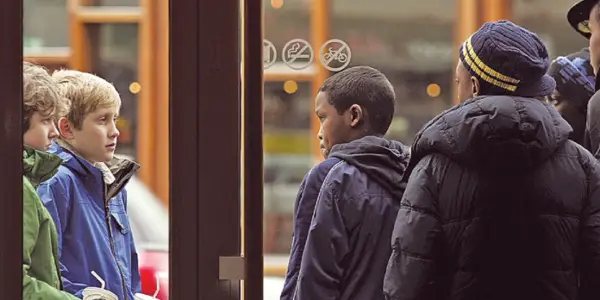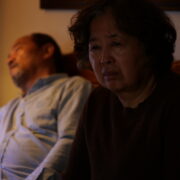Do Your Homework: Ruben Östlund’s PLAY

I've been a film lover since being traumatized by "The…
At this year’s Cannes Film Festival there was a good deal of irony surrounding Ruben Östlund’s Palme d’Or winning satire The Triangle of Sadness. Telling the story of a luxury cruise gone to Hell, the film has been advertised as a scorching critique of the bourgeois lifestyle. And when it comes to the film industry, specifically the festival circuit, nothing gets more bourgie than Cannes. Irony is one word to describe it, hypocrisy may be another. While Östlund’s latest outing has been met with critical praise, several early reviews have asked if a movie that examines the dangers of capitalism and elitism makes its world premier at an event like Cannes then is that just the pot calling the kettle black?
Critiques like these are nothing new for Swedish auteur Ruben Östlund. Similar comments were made about his 2017 feature The Square, which satirized modern art and also took home the Palme d’Or. Östlund‘s films do not make open-and-shut cases about the topics they cover. He questions, provokes, dissects, and more often than not lampoons the taboo. While film lovers are probably familiar with The Square and Force Majeure, his most provocative, most controversial, and for my money his most ingenious work was his overlooked 2011 film Play.
The Play
Unlike Östlund’s more recent films, Play is far from funny. It is a relentlessly bleak study of bullying inspired by an actual Swedish court case in which a gang of youths used psychological warfare to rob other children. Coined “The Brother Trick,” a group of tough looking minors confront a meeker child and ask for the time, prompting them to pull out their cell phone. One of the kids in the gang will then claim that the meeker child’s phone looks identical to their brother’s missing phone and then accuses them of having stolen it. The gang tells the meeker child in order to prove the phone is not stolen, they must follow the gang to meet said brother in an isolated location. The objective is that during the journey to the non-existent brother the child will hit a breaking point and surrender their phone over to the gang. It might sound far-fetched, but this Swedish gang managed to pull it off over 50 times.

And so is the premise of Play, which opens with a six-minute wide shot of the inside of a shopping mall in Gothenburg, where we first meet our merciless gang. They eventually pick a group of three smaller boys in a shoe store and soon begin “The Brother Trick”. What follows is an unflinching look at the power of intimidation and peer pressure as the gang comes up with new ways of making the innocent boys suffer. It is like a bad dream that you are too emotionally invested in to wish it would end.
While the psychological torture aspect is compelling on its own, what ended up being the focus point of Play upon its release was Östlund‘s decision to cast all-black actors as the gang members and all non-black actors as their victims. Although Östlund never fully demonizes the black youths, he works his hardest to make their actions as unforgivable as possible. The film searches for some empathy for them; we get a small glimpse into their impoverished home lives. But it never becomes a generator of compassion the way many films that tackle this topic do. The empathy is fleeting but the anguish is eternal.
Politically Ambiguous
Play caused a frenzy in the Swedish press, prompting author Jonas Hassen Khemiri to pen an article titled “47 reasons why I cried when I saw Ruben Östlund’s film Play.” Other articles echoed Khemiri’s concerns about the film, while some praised its insight into class and race in Sweden. In the end, Play remained politically ambiguous and that indecisiveness is what angered its critics the most.
There is an ongoing debate in the film community over the difference between a provocateur and a troll. While we each have our own definitions to distinguish the two, for me a provocateur is someone who offends with purpose and, more importantly, with intelligence. Yes, Östlund is poking the PC bear with a sharp stick, but his methods of manipulating white guilt goes deeper than being offensive for the sake of it. He puts the audience in a tough situation that forces us to rely on negative racial stereotypes in order to accept what we are watching. He knows it makes us uncomfortable to watch black children target and humiliate non-black children for two hours straight, but he wants to know why this specific dynamic makes us squirm and how we got here as a society.

Play is challenging cinema at its absolute finest. It provides no easy answers, no reassuring notions, and no comfort. It is an impossible film to sit through and not get pissed off on some level, either because you find its depiction of race and youth deeply unsettling or because you become infuriated with the actions of both the offenders and their spineless victims. You start to feel like a ball in a tennis match; in one scene you’re beyond enraged, questioning your faith in humanity, and you’re then hurled into a pit of sorrow, to then be smacked into moments of unexpected humor.
This humor comes from a seemingly random B storyline that Östlund occasionally cuts to. On a commuter train, a baby crib is blocking one of the exit doors. The train’s crew members stumble to find out where the crib came from and what to do with it as the passengers giggle behind their backs. These scenes are never laugh-out-loud funny, but they provide much-needed breaks from the anguish that is the rest of the movie. In the final minutes of Play, we are given a massive clue as to where the crib came from and how it relates to the rest of the story. But only a clue; the truth behind its meaning is left up to the individual viewer.
Conclusion
So is it hypocritical for a movie that puts the wealthy on blast to be met with applause at Cannes? If a satire on modern art is beloved by modern art fans then was its meaning lost on them? It is problematic for a white filmmaker to make a movie about revolting black criminals when his intentions are not clear? I do not think it is possible for a Ruben Östlund film to have a quiet reception. They are brilliant, magnetic, and always supply a whirlwind of ideas and emotions even when they miss their mark. When it comes to their intent they are sort of like an abandoned crib on a train. You are not sure what it is doing there, but you are fascinated by its existence.
Play, along with other Ruben Östlund films, are now streaming on the Criterion Channel.
Watch Play
Does content like this matter to you?
Become a Member and support film journalism. Unlock access to all of Film Inquiry`s great articles. Join a community of like-minded readers who are passionate about cinema - get access to our private members Network, give back to independent filmmakers, and more.
I've been a film lover since being traumatized by "The Shining" at age six. I graduated from Temple Film School and live in Boston now. I am interested in director-driven cinema and exposing the public to lesser known auteurs. I also do private script coverage.













